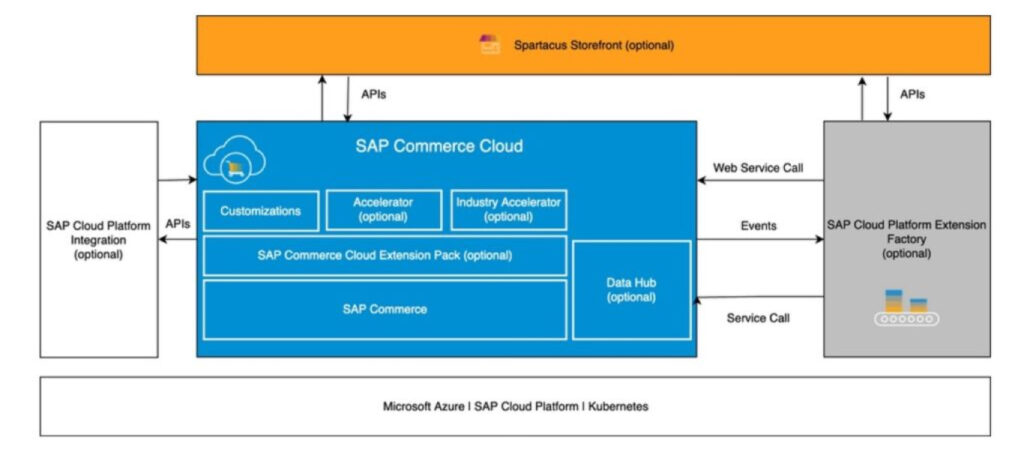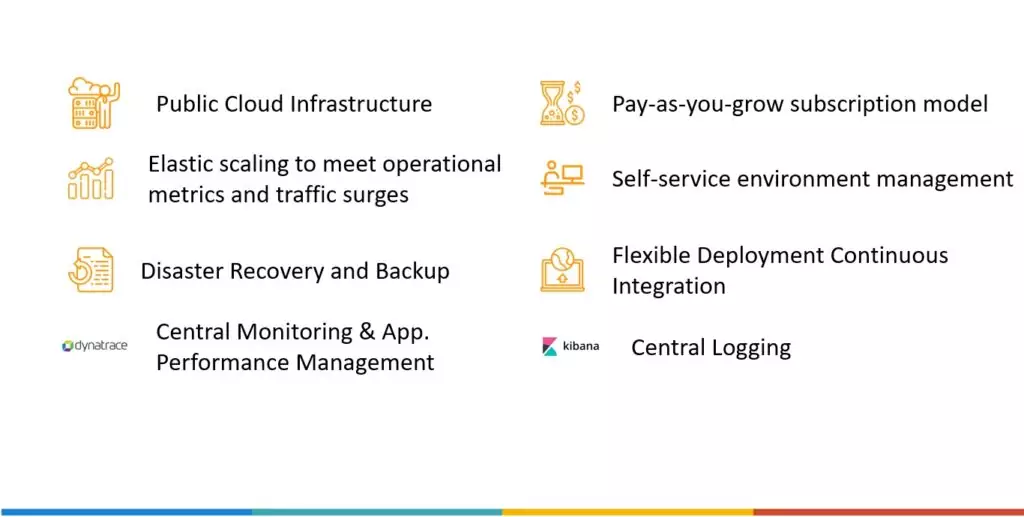This blog is Part 1 of the 4 part series based on excerpts of the webinar – Secrets to Successful SAP Commerce Cloud Migration. It covers:
- Key benefits of SAP Commerce Cloud (Part 1)
- Challenges while migrating SAP on premise to SAP commerce Cloud (Part 2)
- SkillNet approach to migration SAP commerce Cloud (Part 3)
- Q&A SAP commerce Cloud (Part 4)
This blog covers an overview of SAP commerce cloud and its key benefits.
Speakers

DoLoop Digital

SkillNet Solutions Inc

SAP Commerce Experience
Gaurav Rastogi – Moderator
Hello. This is SkillNet’s SAP webinar on secrets to a successful SAP commerce cloud migration.
A little about SkillNet. We’ve been around since 1996. We’ve been makers of modern commerce since the beginning. We’ve been hybris partners since 2009. We are SAP recognized experts and work with some of the brands you might already know.
Pragnesh Ray – SkillNet
SAP Commerce Cloud Overview
You might already have, SAP commerce / hybris, on-premise or SAPCC on data center hosted on a Microsoft Azure cloud platform. The new components in this ecosystem are SAP cloud platform, integration, SAP cloud platform, extension factory, and Spartacus storefront.

A cloud platform integration helps you integrate seamlessly with your backend systems, such as CRM ERP. If you have a need to create extensions based on, events, you would, use the extension factory, as seen in the diagram above. The Spartacus storefront, in brief, is your JavaScript storefront, meaning this is where the whole industry is moving, decoupling from, your backend system.
Key Benefits of SAP Commerce Cloud
It is not a public cloud infrastructure. there are a lot of benefits when you go into a public cloud infrastructure. There is, another, pay as you grow a subscription model. This means you don’t have to invest upfront, you pay for what you use.
There are a lot of variances on how this is licensed from your typical, power, core, subs, protocol, protocol costing – there is a elastic scaling. This is expected when you go to a cloud platform, SAP commerce cloud supports that. So when you have peaks in your hits our data volumes takes care of that self service environment, disaster recovery and backup, flexible deployment, continuous integration.
Dynatrace Kibana has tremendous capability in terms of performance monitoring alerting a lot of things that you can do over here and all this is available to you out of the box.
Pat Samson – SAP
Dynatrace is available for all your different, environments. So as part of your base subscription, you get a dev and production environment. You can also do add on environments for additional data centers or additional production instances.
If you wanted to leverage is Dynatrace is a real user monitoring within your storefront, that is available via the SAP store under a digital experience monitoring. so you can buy it directly from there as well.

To go a little bit level deeper, when we talk about public cloud infrastructure, what we’re doing is we’re still delivering a single tenant solution, on a public cloud infrastructure. So you do still have all the flexibility to do the customizations or modifications to the platform that you need to do.
And one of those, as you mentioned, was the Spartacus storefront, potentially running a headless CMS, or a headless presentation layer, that is absolutely fully supported, as part of that. In addition that the commerce cloud solution we’ve changed the customization approach.
Our on-prem and commerce cloud customers SAP infrastructure they were still doing their customizations on the commerce platform itself. So that extension factory you mentioned in the previous slide is really the new mechanisms for defining as many customizations as you can.
So any, event based customization, serverless function, land to function you want to create, you can generate as a microservice, separate from the commerce platform. So you’re running it independently of commerce, scaling it independently of commerce, and you’re no longer restricted to developing on the Java spring framework that the commerce core is built on, so that’s a big benefit.
The other advantages, any of those microservices you build and deploy on extension factory, they’re not limited to just commerce. You can take and expose those microservices to any other product, whether it’s an SAP product like sales cloud, or marketing cloud or, some other third party application you have.
So it’ll all be API based, allowing you, to get at those customizations and get the most flexibility out of them. The only other thing I wanted to hit on this was the self service environment. So, starting with release 6.7, we added support for Docker containers and Kubernetes to enable elastic scaling.
For our on-premise customers, you still had to build all that automation to do automated deployments, to do auto-scaling, with the self-service environment, the cloud automation platform we’re delivering now we’ve done all that work for you. So you can, simply just log in, generated build, run a deploy.
There’s no SAP resources that have to be involved. There’s no, manual moving, the builds around or any of that type of thing. And that’s all managed by the build engine, by the build server. We’ve seen customers that typically lead to anywhere up to 35 to 40% reductions and maintenance efforts or development cycles and getting new features out that’s another key component of what commerce cloud is delivering.
Free! High level analysis and estimation for migrating from SAP CC.
Part 2 of the blog is on “Challenges while migrating SAP on premise to SAP commerce Cloud”.
Part 3 is “SkillNet approach to migration SAP commerce Cloud“
Part 4 is “SAP commerce Cloud Q&A“






 Ingeniería
Ingeniería








